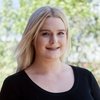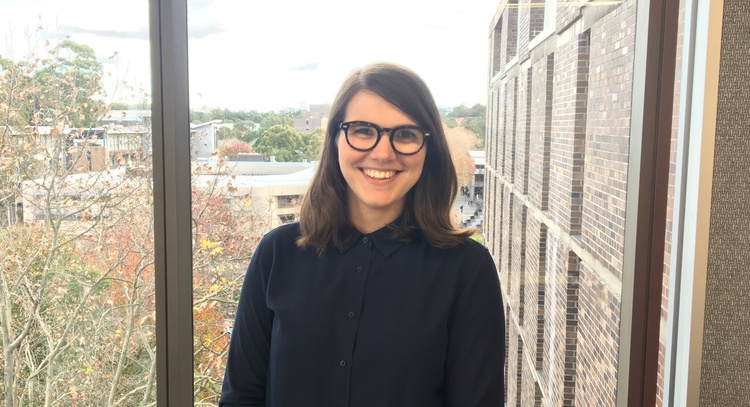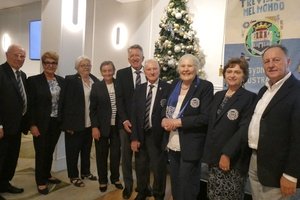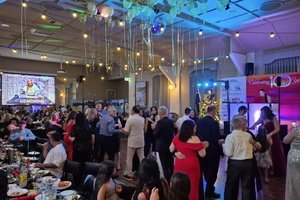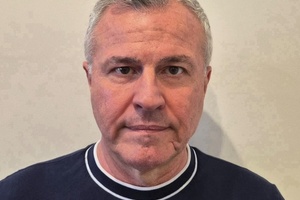A fluid mechanist and lecturer in Applied Mathematics at Sydney’s Macquarie University, Dr Calabretto has always enjoyed learning and was encouraged from a young age to pursue her interests and talents.
Interestingly, Dr Calabretto never intended to become a mathematician: she originally wanted to be an astrophysicist, but as she was studying the maths she needed for physics she discovered her real passion.
The Sydneysider is the product of post-war migration and, whether unknowingly or intentionally, she is certainly making the most of the opportunities afforded to her thanks to her grandparents’ sacrifices.
Dr Calabretto’s paternal grandparents came from the northern Italian region of Veneto: her nonno from Pederobba and her nonna from Crocetta del Montello.
They migrated to France following World War II in search of employment and had two sons – one of them Dr Calabretto’s father – while there.
When Dr Calabretto’s father was around five years old, the family moved to Australia to reunite with relatives and seek new opportunities.
They started out in rural South Australia and ended up in Murray Bridge, where Dr Calabretto’s grandparents lived out the rest of their lives.
Dr Calabretto, on the other hand, was raised in Adelaide, where she completed her undergraduate degree and her Honours.
She then began her PhD in her hometown and completed it in New Zealand, before taking up a post-doctoral position in Zurich, Switzerland.
Following her time abroad, Dr Calabretto was recruited back to Australia in her current position at Macquarie University.
In her role at the university, Dr Calabretto’s time is divided between teaching, research and promoting maths.
In the first semester, she generally teaches first year maths for engineering, science and maths students, while she usually spends the second semester teaching a more specialised third year course related to her research field.
As a fluid mechanist, Dr Calabretto seeks to “understand and predict the behaviour of rotating fluids, exploring fundamental questions in fluid physics, with the potential to impact fields as diverse as aerodynamics and climate science”.
In simpler terms, she studies how fluid flows at a fundamental level, which can in turn be applied to build more efficient aircraft and develop the next generation of global climate models.
“I mainly do computational work; I run a lot of big simulations on complex fluid dynamics problems that you couldn’t sit down with a pen and paper to sort out,” she explained.
“What I quite enjoy about maths is that you can sit down with an equation and do as much as you can with it to a point where you can’t go any further, and then you can use big computers to solve the rest, then verify it all by doing actual fluids experiments in a lab.”
The other third of Dr Calabretto’s time is dedicated to promoting maths as an interesting and relevant subject.
Last year, she participated in ABC Radio National’s Top 5 Under 40 program.
The program involved a two-week media residency at the ABC in which Dr Calabretto produced a radio package, online article and social media video to shed the light on maths.
“If you don’t work in maths it’s hard to know what it is and why it’s relevant, so I like trying to get people as excited about it as possible,” she laughed.
Since participating in the program, Dr Calabretto has been presented other media opportunities, including a segment on the new season of the ABC’s ‘Catalyst’ program, which aired on Tuesday.
The talented mathematician believes the key to generating more interest around maths is making it more relevant to people.
“When you think about technological advances, at the backbone of all of that science is maths,” she said.
“Without maths we wouldn’t have computers and phones.”
She also highlighted the problem with maths being seen as an “elitist” field, reserved only for the Einsteins of the world.
“I’m not a genius but I studied maths for a very long time and I think if anyone else did the same they would also be very good at it,” she said.
Dr Calabretto is particularly passionate about encouraging young women to pursue an interest in maths, as the number of women studying higher mathematics in Australia is declining rapidly.
Part of her work involves visiting all girls’ schools to encourage students to study as much maths as they can for as long as possible to increase their employment opportunities.
“I think it’s about changing the stigma and the way in which maths is generally perceived by everyone as a male-dominated area,” she said.
“Introducing more female role models in the field can show young people that you can be a girl and be interested in maths...you can be interested in anything you want!”
Dr Calabretto has become a strong role model herself, paving the path to a prosperous future for maths by making it more relatable and appealing than ever.
